Global demand for virtual phone numbers is exploding. The Direct Inward Dialing (DID) market is projected to reach $47.5 billion by 2032, growing at a 16.3% CAGR from 2023. That growth reflects a major shift: businesses no longer rely on hardware PBX systems or country-specific landlines to stay connected. Instead, they adopt DID numbers to route calls through SIP trunks and cloud PBXs, building scalable and borderless communication networks.
For companies managing distributed teams, cross-border customers, and compliance obligations, the choice of DID provider determines much more than call quality. A weak vendor may leave you facing hidden porting fees, downtime during peak hours, or compliance risks in regulated markets like the EU. By contrast, a strong provider offers instant provisioning, global reach, and integrations with platforms such as Microsoft Teams, Zoom, or custom CRMs, without overcharging or creating lock-in.
This article compares the best DID number providers in 2025 through a data-backed lens. We’ll look at technical differences, pricing models, and real business applications, so you can identify the provider that fits your growth strategy.
Key Takeaways
- The global DID (Direct Inward Dialing) market is projected to hit $47.5 billion by 2032, with businesses rapidly replacing legacy phone systems with virtual numbers for scalability and cost-efficiency.
- Top providers like DIDlogic, DIDforSale, and IDT Express differ in global reach, SIP integration, porting reliability, security, and API flexibility, DIDlogic stands out for developer-first tools, transparent pricing, and 70+ country coverage.
- Key decision factors when choosing a DID provider include SLA-backed redundancy, CRM/UCaaS integrations, compliance (GDPR, HIPAA), porting transparency, and real support access, not just pricing.
- Use cases range from SMBs creating a local presence to global enterprises managing multi-market compliance and 24/7 routing via cloud PBXs and SIP trunks.
- Choosing the right provider impacts not just cost but operational resilience, global scaling potential, and customer experience, making DID a strategic investment, not just a tech feature.
What Exactly Is a DID Number (and Why It Matters in 2025)
Direct Inward Dialing (DID) isn’t just another phone line, it’s the foundation of modern business telephony. Unlike legacy systems where every employee needed a separate physical line, DID assigns unique virtual numbers that connect through SIP trunks or PBX systems. Calls route digitally over IP, not through copper wires, which removes the need for one-to-one line provisioning.
That difference matters. A company can now acquire hundreds of local or international numbers and link them to a single cloud PBX. Routing becomes software-defined: when a call arrives, the system checks the DID, directs it to the right desk, team, or remote agent, and does so in milliseconds. The result is scalable, borderless communication without the cost and rigidity of legacy PRI lines.
The shift reflects the broader evolution of business telephony:
- Hardware PBX: required physical lines, on-site equipment, and carrier contracts.
- Cloud-hosted PBX: moved the PBX into the cloud but often kept geographic restrictions.
- DID-driven VoIP: allows any business, from a startup to a multinational, to establish a local presence anywhere and scale instantly.
DID vs. Regular Phone Numbers
A regular phone number is tied to geography and infrastructure. It’s anchored to a SIM card or a copper line, and routing follows fixed carrier paths. A DID number works differently:
Call Flow Comparison
- Traditional Phone Number: Caller → Carrier Switch → Physical Line → Desk Phone.
- DID Number: Caller → Carrier → SIP Trunk → Cloud PBX → Routing Logic → Agent (desk, softphone, or mobile).
With DIDs, the number itself becomes independent of geography or device. Calls can land on a softphone in New York, a desk phone in Singapore, or a CRM-integrated browser tab, using the same number. That flexibility is why DIDs underpin most modern VoIP deployments.
DID in Today’s Business Context
Companies adopt DIDs to address three pressing needs:
- Scaling customer support: Enterprises can allocate unique numbers for departments, campaigns, or even individual agents, ensuring faster routing and clear reporting.
- Remote workforce communication: Teams spread across time zones can all share the same corporate PBX without needing local offices.
- Regulatory compliance: In healthcare, finance, and government contracts, DIDs allow calls to be logged, monitored, and encrypted according to jurisdiction-specific rules.
The trend is only accelerating. The global VoIP market is forecast to reach $102.5 billion by 2032, growing at 9.8% CAGR, with DID adoption forming the backbone of that growth. Businesses view DIDs not as an add-on but as an essential layer of their communication stack in 2025.
Critical Features That Differentiate DID Providers
Choosing a DID provider isn’t about ticking boxes, it’s about understanding how each feature shapes daily operations. The wrong choice can slow down growth, add hidden costs, or expose your business to compliance risks.
Geographic Reach
A provider’s coverage determines whether you can scale into new markets without legal roadblocks. For example, in regions like the EU or LATAM, regulators restrict number allocation to licensed carriers.
- Many smaller providers rely on resellers, which can cause delays or sudden number withdrawal.
- DIDlogic works directly with carriers, offering over 70 countries with regulatory compliance baked in, which avoids mid-contract disruptions.
Number Types
Businesses need flexibility across local, mobile, and toll-free numbers. Local numbers help build trust in-country, while toll-free supports national campaigns.
- Some vendors excel in one type (e.g., toll-free in the US) but lack breadth abroad.
- DIDlogic supports local, mobile, and toll-free numbers globally, letting companies unify campaigns under one provider instead of juggling multiple vendors.
Porting Reliability
When migrating from another carrier, downtime costs money and reputation. Providers vary widely on fees and timelines.
- Competitors often impose hidden porting charges or multi-week delays.
- DIDlogic provides transparent porting with clear SLAs, reducing downtime to hours instead of days.
Redundancy & Failover
Downtime isn’t a minor inconvenience, it halts customer interactions. The difference lies in whether the provider backs claims with real SLAs.
- Some providers advertise “99.9% uptime” without active failover systems.
- DIDlogic operates geo-redundant routing and publishes verifiable SLA commitments, ensuring calls automatically reroute in outages.
Security
Telecom fraud costs businesses billions annually. DID providers must guard against spoofing, interception, and compliance breaches.
- Many carriers still rely on basic TLS/SRTP without active fraud monitoring.
- DIDlogic combines encryption, automated fraud detection, and GDPR/HIPAA readiness, making it viable for healthcare, finance, and government use cases.
API & Integrations
A DID number only becomes powerful when it plugs into the systems teams already use.
- Some providers restrict APIs to premium tiers or charge extra for UCaaS integrations.
- DIDlogic offers developer-first APIs, enabling direct integration with CRMs, Microsoft Teams, Zoom, and 3CX out of the box, without surprise fees.
Top DID Number Providers Compared (2025 Edition)
Three names consistently appear on enterprise shortlists: DIDlogic, DIDforSale, and IDT Express. Each brings strengths, but their fit depends on your operational needs.
1. DIDlogic
DIDlogic emphasizes transparency and developer control. Businesses can provision numbers in 70+ countries instantly through a self-serve portal or API. Pricing is usage-based and published openly, no hidden setup fees or vague surcharges.
- Pros: Broad international reach, instant provisioning, transparent pricing, API-first design.
- Cons: May be overkill for very small businesses focused only on one market.
2. DIDforSale
DIDforSale is a strong player for US-centric businesses, particularly those relying on toll-free campaigns. Its APIs focus on PBX integration and reseller-friendly setups.
- Pros: Competitive US toll-free rates, solid PBX-focused APIs, reseller-friendly.
- Cons: Limited global coverage compared to peers, slower provisioning outside North America.
3. IDT Express
IDT Express specializes in wholesale and enterprise-scale deployments. Its strength lies in bulk DID pools and smart routing options that optimize latency.
- Pros: Excellent wholesale rates, large DID pools, smart routing for global traffic.
- Cons: Less friendly for smaller businesses, setup is more complex and support geared toward carriers or high-volume enterprises.
Side-by-Side Comparison Table of Providers
| Provider | Global reach | Porting options | SIP integration depth | Pricing model | Support channels | SLA / redundancy |
| DIDlogic | 70+ countries; strong EU/APAC/LATAM coverage | Clear process, transparent fees; low-downtime cutovers | TLS/SRTP, webhooks, granular routing; UCaaS/CRM friendly | Usage-based; published rates; no surprise add-ons | Ticket + live chat; account management available | Published SLA; geo-redundant failover |
| DIDforSale | US-focused; limited international breadth | Solid US porting; slower outside North America | PBX-centric SIP; basic connectors | Mixed model; competitive US toll-free | Ticket + phone | Standard uptime claims; less detail on failover |
| IDT Express | Wide wholesale footprint; strong multi-region pools | Suited for bulk ports; more complex requirements | Carrier-grade SIP; smart routing controls | Wholesale rates; volume discounts; minimums may apply | Ticket + account manager | Carrier-grade SLA; multi-POP redundancy |
Snapshot for fast vendor triage. Always confirm current terms and coverage before committing.
DID Pricing Models Explained (and Hidden Costs to Watch For)
Two layers drive cost: number rental and call usage. Most providers also add regulatory and service fees. Here’s how to read a quote.
Flat monthly vs. per-minute usage
- Flat monthly: Pay a fixed fee per number or channel. Predictable, but you’ll overpay in low-volume periods.
- Per-minute usage: Pay only for actual inbound/outbound minutes. Better for variable demand; watch regional rate tiers.
Real-world patterns
- DIDlogic: usage-based with published rates and line-item transparency.
- DIDforSale: strong US toll-free pricing; mixed model for local.
- IDT Express: wholesale pricing for volume; discounts tied to commits.
Fees to watch (often buried)
- Setup/activation per number
- Porting (per number or batch)
- Regulatory add-ons: E911, USF, “regulatory recovery,” local surcharges
- Compliance services: CNAM dips, call recording storage, encryption add-ons
- Support tiers: live support or account management gated to higher plans
How to Choose the Right DID Provider for Your Business
Use this checklist as a decision framework. Gate on must-haves first, then score contenders.
- Call volume & geography
- Map current and 12-month target countries.
- Require native coverage where you’ll scale, not reseller hops.
- Ask for per-country rate cards and porting timelines.
- Integration needs (CRM, UCaaS, custom dev)
- List systems: Teams, Zoom, 3CX, Salesforce, Zendesk, custom PBX.
- Verify API depth: webhooks, number management, call events, recording.
- Run a 48-hour sandbox test with your exact workflow.
- Security & compliance (GDPR, HIPAA, lawful intercept)
- Demand TLS/SRTP, fraud monitoring, and data-at-rest controls.
- Confirm data residency options and DPA/BAA availability.
- Review incident response SLAs and audit reports.
- Support quality (live response time)
- Test real channels: open a ticket and use chat/phone.
- Require a named account contact for production scale.
- Check public status pages and past incident transparency.
- Scalability & redundancy
- Ask for an architecture diagram showing geo-redundant POPs.
- Validate automatic failover and SIP re-registration behavior.
- Run a controlled failover drill during the pilot.
- Pricing clarity
- Compare number rental, minute tiers, and all add-ons.
- Request a mock invoice for your traffic profile.
- Model three months of usage to spot volatility.
Decision rule
- If a vendor fails coverage, compliance, or redundancy, stop there.
- For finalists, use a weighted score (coverage 25%, reliability 25%, integrations 20%, support 15%, pricing 15%).
- Run a two-week pilot with production-like loads before porting core numbers.
Use Cases for Virtual Numbers (Real-World Examples)
Virtual numbers aren’t a one-size-fits-all tool. Their impact depends on how they’re applied in practice. From startups trying to enter new markets to enterprises managing thousands of calls across time zones, DIDs adapt to very different operational realities. The following examples show how they work in two common scenarios.
Small Businesses & Startups
For younger companies, DIDs offer a way to project credibility without heavy infrastructure.
- Local market entry: A SaaS startup in Berlin can purchase New York and Toronto DIDs to serve North American customers without opening offices. Callers see a local number, but support routes back to Europe seamlessly.
- Remote teams: A design agency with contractors across three continents can unify inbound calls to a single DID, then route by skill set or time zone. Costs stay predictable, and no one needs separate carrier contracts.
By combining local presence with flexible routing, small players can appear as established as their larger rivals.
Enterprises & Call Centers
For enterprises, the challenge is scale and compliance.
- Multi-country support: A multinational retail brand can assign local numbers in 15 markets, all pointing to a global call center. Customers dial locally, agents answer anywhere.
- Advanced routing: With DIDs, follow-the-sun coverage becomes feasible. Calls arriving in London after hours automatically route to Manila or Chicago, keeping support 24/7 without downtime.
- Compliance: Industries like healthcare and finance often require call recording and data localization. DIDs allow enterprises to meet local telecom laws while keeping a centralized PBX.
The difference isn’t just cost, it’s operational resilience.
Final Thoughts: Scaling Communication Beyond 2025
Direct Inward Dialing has moved from optional to essential. Companies that still rely on legacy phone lines face higher costs, slower scaling, and gaps in compliance. By contrast, organizations adopting DIDs alongside SIP trunking and cloud platforms future-proof their communications.
The next stage is omnichannel. Phone numbers no longer stand alone; they connect voice, messaging, and CRM systems into a single thread of customer interaction. Businesses that unify under a single provider gain resilience, transparency, and the ability to expand globally without disruption.
Test DIDlogic’s global DID coverage with a trial account today and see how fast you can provision numbers in the markets that matter most.
FAQs
What’s the difference between DID and toll-free numbers?
The key difference lies in who pays and how they’re perceived. DIDs are essentially local or geographic numbers that get tied to specific regions – think of them as virtual local presence numbers. When someone calls a DID, they pay standard local calling rates just like calling any regular business in that area. Toll-free numbers flip this around completely – customers call for free while your business covers the per-minute costs. Both types route through SIP and PBX systems without any technical issues, but their use cases are quite different. DIDs work great for establishing local credibility in specific markets, while toll-free numbers shine for nationwide marketing campaigns and customer service lines.
Can DIDs receive SMS/MMS?
Yes, many DID providers, including DIDlogic, do offer SMS and MMS capabilities on their numbers. It’s become pretty standard functionality, though availability does vary depending on which country you’re getting numbers from and what the local regulatory framework allows. Some regions have more restrictive rules around messaging services, while others are wide open. The messaging functionality typically works through API integrations or web portals, making it easy to manage both voice calls and text conversations from the same interface. This dual capability is particularly valuable for businesses that want to offer multiple communication channels to their customers without juggling separate services or phone numbers.
How long does porting take?
Porting timelines can vary quite a bit, typically ranging from 3-10 business days depending on which country you’re working in and the carriers involved. Some regions have streamlined processes that move quickly, while others involve more complex verification steps that slow things down. Large batches of numbers or particularly complex routing requirements can extend these timelines further. The process also depends on how responsive your current carrier is with releasing the numbers and providing necessary documentation. Most providers give you a fairly accurate estimate upfront, but it’s worth building some buffer time into your plans, especially if you’re coordinating a service launch or migration that depends on the porting completion.
Are DID numbers safer for privacy than mobile/landline?
Yes, DIDs offer significantly better privacy protection compared to using your personal mobile or landline numbers for business purposes. Your actual phone numbers stay completely private while you still maintain full accessibility for incoming calls and messages. This separation is particularly valuable for entrepreneurs, freelancers, or anyone who doesn’t want their personal contact information floating around publicly. Many DID providers also offer call logging and encryption features that support compliance requirements in regulated industries. You can easily control when and how the number is active, route calls to different destinations based on time or availability, and maintain professional boundaries without compromising accessibility for legitimate business contacts.
What happens if my provider goes offline?
Reliable providers like DIDlogic operate geo-redundant systems designed to handle outages gracefully. When redundancy is properly configured, calls automatically reroute through backup paths without callers even noticing any disruption. The better providers maintain multiple data centers across different geographic locations, so a localized outage doesn’t bring down the entire service. Most professional-grade services come with SLA-backed uptime guarantees, meaning they’re contractually committed to maintaining specific availability levels. That said, it’s still worth understanding your provider’s redundancy architecture and having contingency plans for worst-case scenarios. Some businesses maintain relationships with backup providers or alternative routing options for critical communication channels, though this is usually overkill for most operations.
Can I scale from one country to 20+ with the same provider?
Yes, if your provider has native coverage and proper regulatory approvals across multiple countries. DIDlogic, for example, supports 70+ countries, which means you can expand your operations without needing to patch together services from multiple vendors. This unified approach simplifies billing, support, and technical integration significantly. Managing DIDs across many countries through a single provider means consistent APIs, unified reporting, and streamlined account management. However, not all providers offer truly global coverage – some use partnerships or reseller arrangements that can complicate support and pricing. When evaluating providers for multi-country expansion, check whether they have direct carrier relationships and local regulatory compliance in each target market rather than just technical connectivity.
Are DID numbers VoIP-only, or can they connect to landlines too?
DIDs are fundamentally VoIP-based services, but they’re designed to integrate seamlessly with traditional telephone networks through SIP trunks. This means callers using regular landlines, mobile phones, or any traditional telephone service can reach your DID numbers without any special setup or compatibility issues. The magic happens at the provider level – they handle the translation between internet-based calling and traditional phone networks. From the caller’s perspective, dialing a DID feels exactly like calling any other phone number. On your end, you get all the flexibility and features that come with VoIP systems, including call routing, recording, analytics, and integration with business applications, while maintaining complete compatibility with the existing telephone infrastructure.
Further Reading


